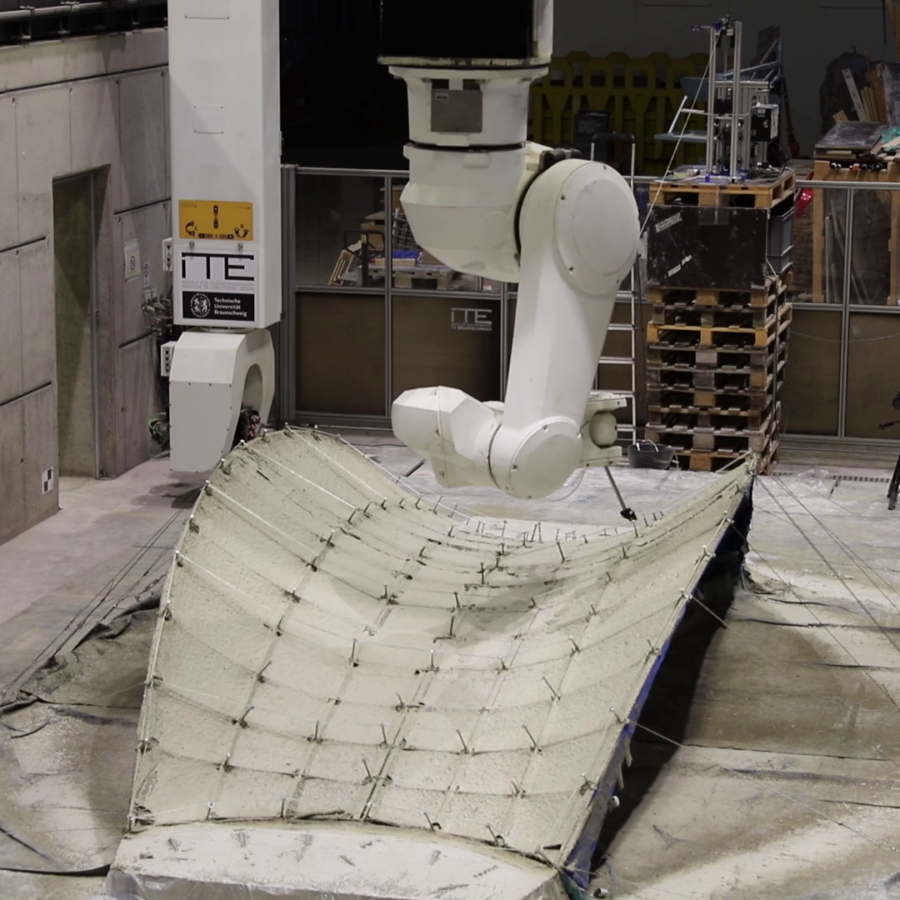Research Summary Report of A05
Integration of Individualized Prefabricated Fibre Reinforcement in Additive Manufacturing with Concrete
[13.03.2024]
Gantner, Stefan; Scientific Researcher, stefan.gantner@tu-bs.de
Hack, Norman; Project Leader,
n.hack@tu-braunschweig.de
Collaboration:
Amiri, Fatemeh; Scientific Researcher,
fatemeh.amiri@tu-braunschweig.de
all: TU BS, Institute of Structural Design (ITE)
Main Goal
Cement-based additive manufacturing techniques need to be enhanced by the ability of integrating reinforcement, in order to fulfil requirements of construction. This project focuses on non-metallic continuous fibre reinforcement, which is not only corrosion resistant but also flexible in handling. Instead of bending and welding, glass or carbon fibre rovings can be processed robotically by winding onto a support structure. Respective fabrication strategies and their interaction with additive manufacturing of concrete are the main focus of this project.
Summary
Cement-based additive manufacturing techniques need to be enhanced by the ability of integrating reinforcement, in order to fulfil requirements of construction. This project focuses on non-metallic continuous fibre reinforcement, which is not only corrosion resistant but also flexible in handling. Instead of bending and welding, glass or carbon fibre rovings can be processed robotically by winding onto a support structure. Respective fabrication strategies and their interaction with additive manufacturing of concrete are the main focus of this project.
The second technique, Core Winding, was developed to robotically implement a reinforcement strand along the outside of a freshly printed wall-like element. In combination with SC3DP, it was proven that complex curved layouts, especially force-flow-oriented reinforcement, can be approximated. By means of a SC3DP-Cover-layer the reinforcement is fully embedded into concrete.
The third approach of Pin Grid Winding aims at the preproduction of flat and slightly double curved meshes, which can be placed between the printing steps. Flat inlays have been integrated for three different particle bed printing techniques (SCA, SPI and LP3DCP). Furthermore, a double curved mesh has been integrated into a SC3DP-wall-element. Recently, a stay-in-place variant of Pin Grid Winding was applied on a digitally fabricated bridge (see fig. 2).











